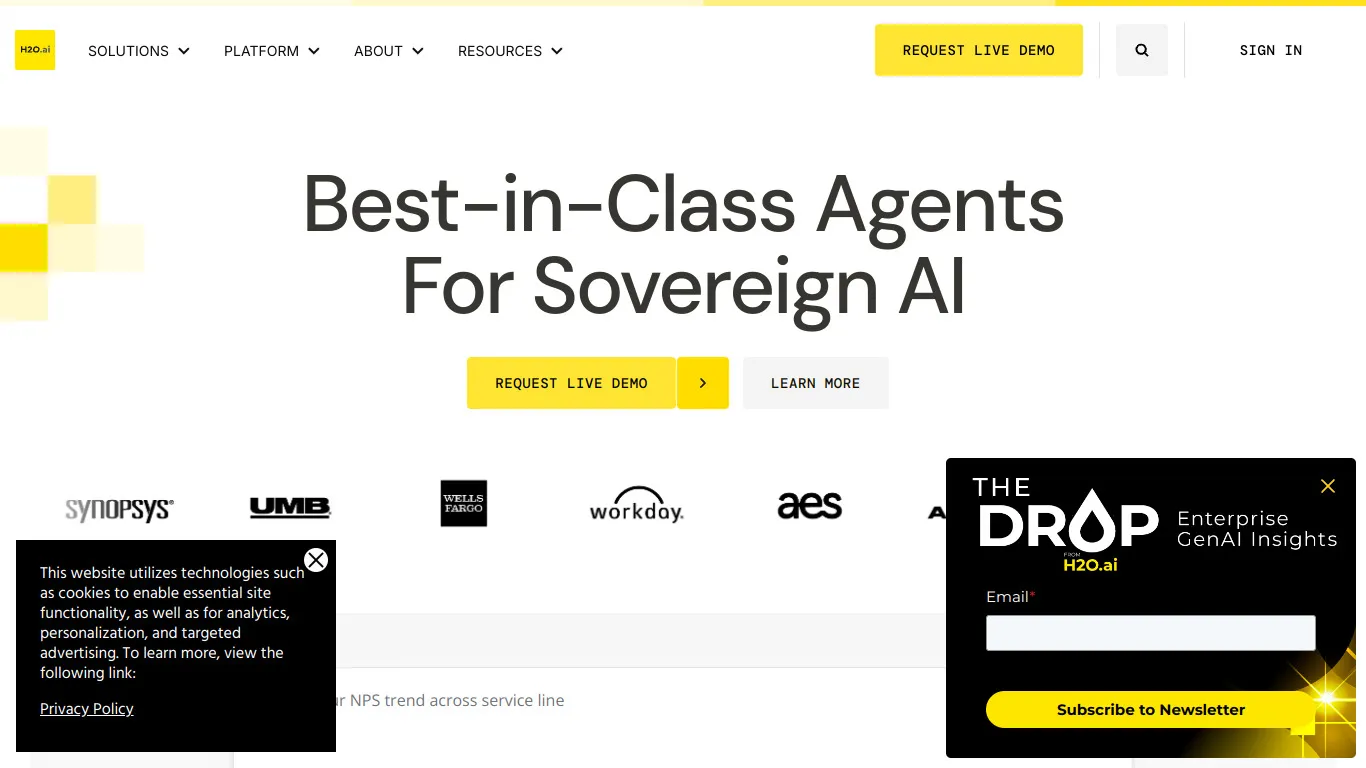You want to get a head start thanks to theSoftware advantage AI Data Analysis ? Data analytics powered by artificial intelligence is revolutionizing the way businesses make strategic decisions. In this article, we will see together how these tools can transform your organization and boost your competitiveness.
What is data analysis with AI?
Data analysis with artificial intelligence has become an essential pillar for modern businesses. It involves the use of machine learning models, deep neural networks, and other techniques to extract relevant information from raw data. Unlike traditional methods, AI can process unstructured data, such as images, text, or videos, allowing for deeper and more comprehensive understanding. In 2025, the rise of digital technologies multiplied by ten the volume of data generated every day, making the solutions ofAI data analysis for businesses of all sizes.
The key benefits of AI data analysis software
AI-driven data analysis software offers major strategic advantages:
Speed and efficiency: AI algorithms can process terabytes of data in minutes, which would have taken weeks with traditional methods. For example, a study showed that businesses using AI reduce their analysis time by an average of 70%.
Increased precision: AI minimizes human error. Thanks to deep learning, models are continuously improving, increasing the accuracy of predictions by up to 95% in some cases.
Data-based decisions: AI provides insights based on real data, avoiding decisions based on intuition. This has led to a 20% increase in profitability for data-driven businesses.
Large-scale customization: AI software makes it possible to create personalized experiences for customers. In marketing, this results in a 20% increase in conversion rates.
THEsoftware advantage offered by these tools is essential to remain competitive in today's constantly changing market.
Practical applications of AI in data analysis
The applications of AI in data analysis are vast and affect many sectors:
Fraud detection: In the banking sector, AI analyzes transactions in real time, detecting suspicious activity and reducing financial losses by 40%.
Predictive maintenance: In the manufacturing industry, AI predicts equipment failures, reducing downtime by 30% and saving millions of euros.
Customer behavior analysis: Retailers use theData analytics AI to understand customer preferences, which leads to a 25% increase in online sales.
Personalized health care: AI helps analyze medical data to offer personalized treatments, improving treatment success rates by 50%.
Precision agriculture: Farmers are using AI to analyze weather, soil, and crop data, increasing yields by 25% while reducing fertilizer and water use.
Key technologies and tools for AI-driven data analysis
The range of available tools is constantly expanding in 2025:
DataRobot: An automated machine learning platform that allows businesses to create and deploy predictive models quickly.
SAS Viya: An open, cloud-native analytics solution that offers massively parallel processing capabilities.
Microsoft Azure AI: Offers a complete suite of AI services, including tools formachine learning and natural language processing.
IBM Watson: Used to analyze complex data, it is particularly effective in the health and financial sectors.
Google Cloud AI Platform: Offers managed services for the development of AI models, with a scalable infrastructure to handle large amounts of data.
How to integrate AI into your data analysis process
Integrating AI requires a well-planned strategy:
Needs assessment: Identify areas where AI can have the biggest impact. According to a survey, 60% of businesses started with pilot projects before deploying AI on a large scale.
Investment in skills: Train your staff or hire AI experts. The average salary for a data scientist in 2025 is 80,000 euros per year.
Choosing the right tools: Select AI analysis software adapted to your specific needs. Consider compatibility with your existing systems and ease of use.
Technological infrastructure: Upgrade your infrastructure to manage data volume and speed. This may include moving to cloud solutions for increased scalability.
Data Management: Make sure your data is of good quality. AI is only as good as the data it analyzes.
Ethical Considerations: Establish policies for the responsible use of AI, respecting data privacy and security.
Future trends of AI in data analytics
Technological advances continue to transform the landscape:
Explainable Artificial Intelligence (XAI): Businesses are demanding more transparency in AI decisions. XAI will make it possible to understand the reasons behind the predictions, increasing user confidence.
Edge AI: Data processing at the edge of the network reduces latency and improves responsiveness, which is crucial for real-time applications.
Hyper-automation: Organizations will seek to automate every possible process, creating highly efficient operational environments.
Convergent AI: Integrating AI with other emerging technologies like blockchain and augmented reality will open up new possibilities.
Ethics and regulation: Governments will put in place new regulations to regulate the use of AI, guaranteeing data protection and algorithmic responsibility.
Conclusion
In short, theSoftware advantage AI Data Analysis is undeniable for businesses wishing to remain competitive in 2025 and beyond. By adopting these technologies, you can improve operational efficiency, reduce costs, and make more informed strategic decisions. Initial investments, whether in terms of time or financial resources, are quickly offset by the return on investment. Don't wait any longer to integrate AI into your data analysis process and get a head start on your competitors.






















































































